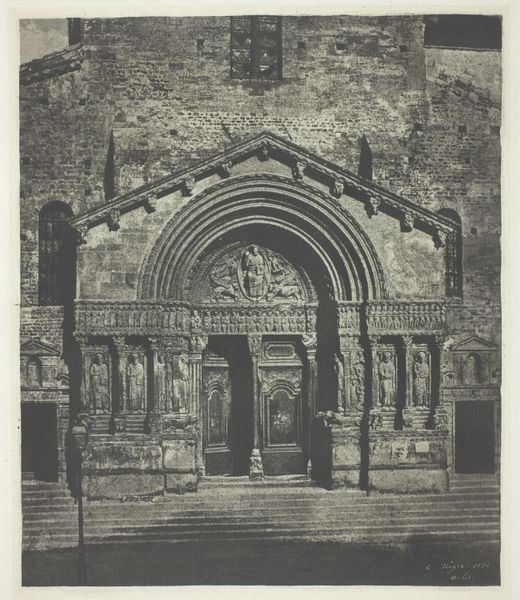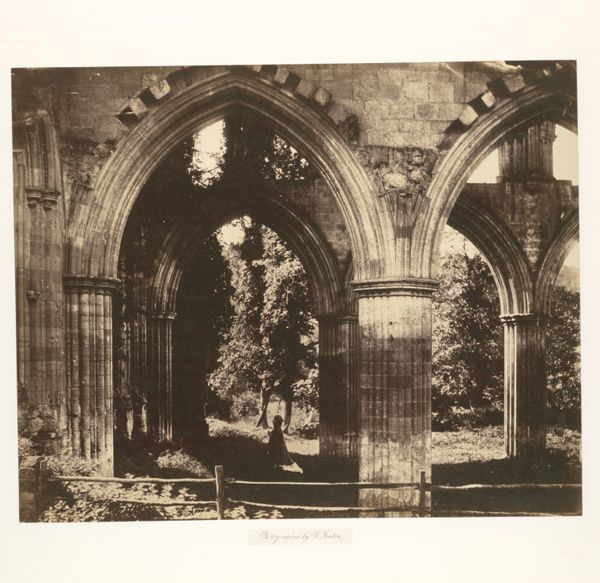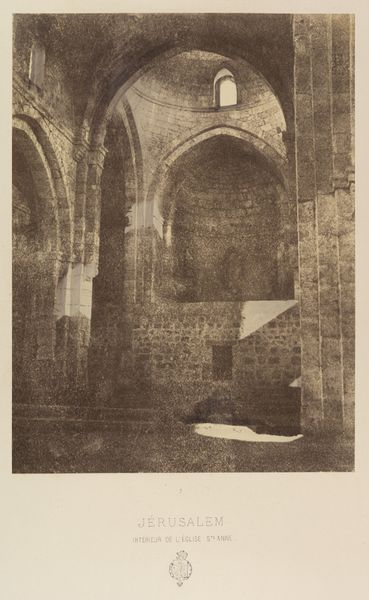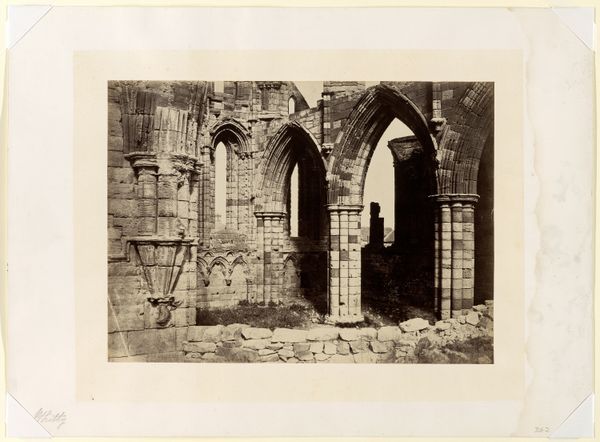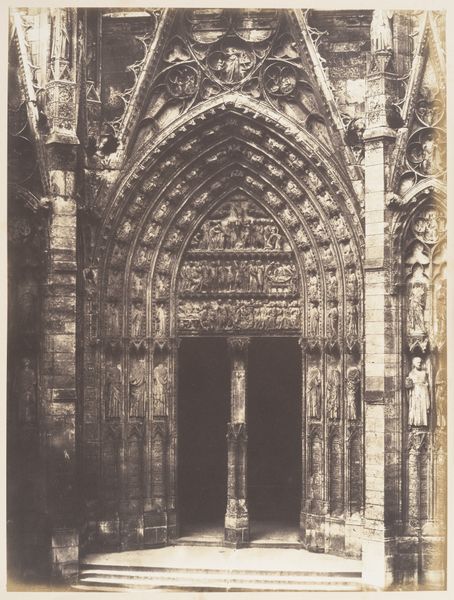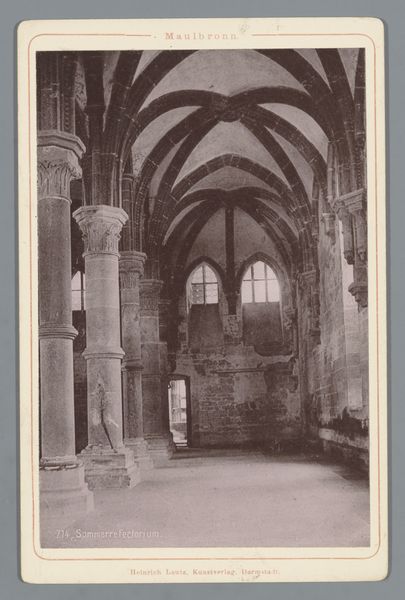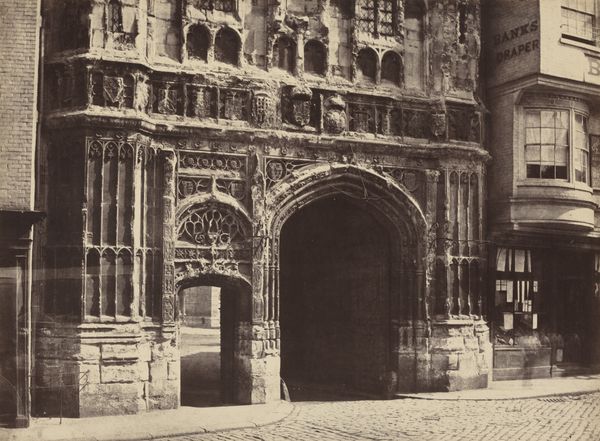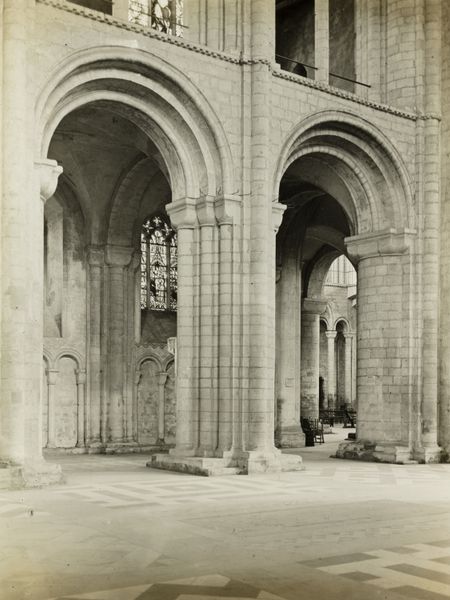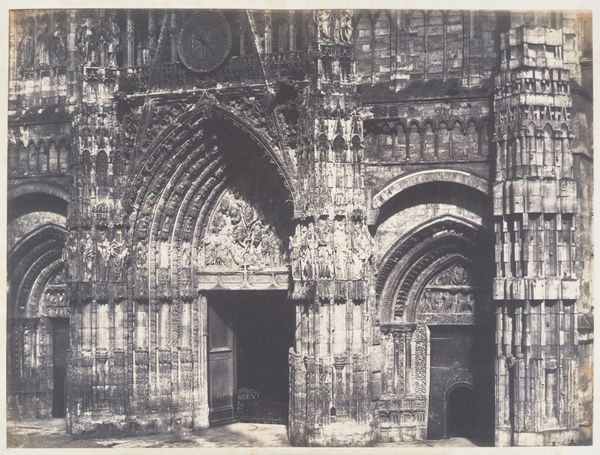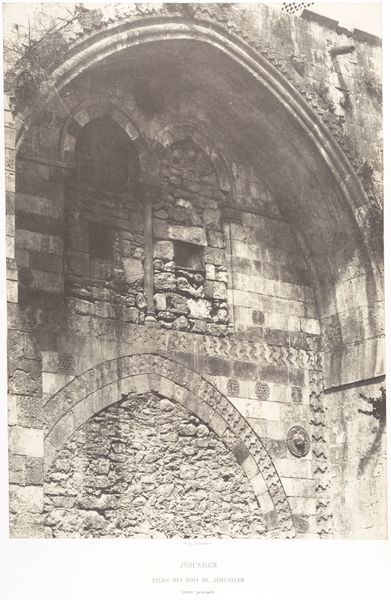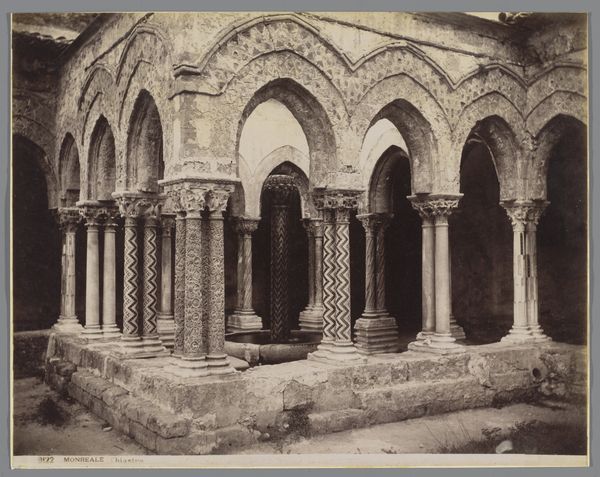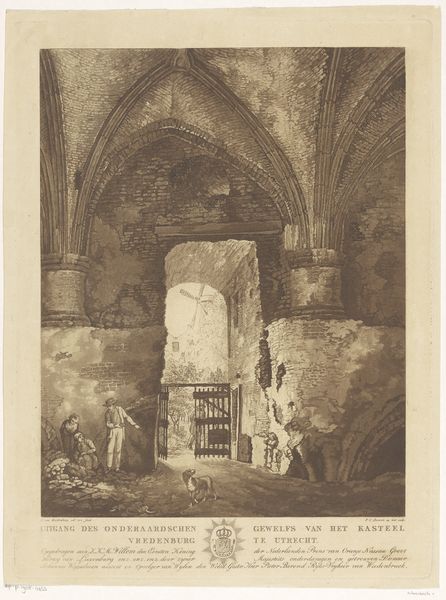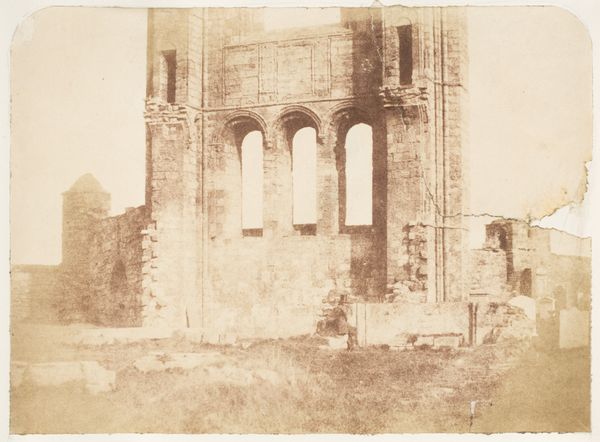
Dimensions: Image: 35.8 x 43.3 cm (14 1/8 x 17 1/16 in.) Mount: 41 x 48.2 cm (16 1/8 x 19 in.)
Copyright: Public Domain
Curator: Roger Fenton's "Roslin Chapel, South Porch," taken in 1856, is a remarkable example of early architectural photography. It's currently housed in the Metropolitan Museum of Art. Editor: The intricate stone carving just stuns me. What strikes you when you look at it? Curator: I'm immediately drawn to the process itself. Consider the wet collodion process Fenton employed. It demanded immense skill, a portable darkroom, and immediate development on location. Look at the detail he captured; it highlights the material reality of both photography and the chapel's construction. We need to consider the labour involved, from quarrying the stone to Fenton hauling his equipment. Editor: That makes me think about how different photography was then compared to now! So much effort went into a single image. Curator: Precisely. And how does Fenton’s decision to photograph architecture relate to Romantic ideals about landscape and history? Editor: Maybe it was an attempt to capture something permanent in a rapidly industrializing world, using a very labor-intensive technique? I mean, the materiality is unavoidable; the stone's texture, the print's tonality... Curator: Indeed! The consumption of imagery was shifting; photography, even in its cumbersome infancy, was starting to democratize image production. Do you think Fenton saw his work as competing with established forms of artistic production, such as painting or even architectural drawings? Editor: That’s an interesting thought! It challenges this traditional art hierarchy and democratizes art making through new technologies and methods. The labour of creation and mass production blurs previous delineations, allowing a broader class involvement. Curator: Exactly. So, what's your final take away from this particular photographic construction? Editor: Considering it through a materialist lens definitely makes me appreciate the layers of production behind the image itself. It also democratizes this whole artistic process in ways that other artwork could not. Thanks!
Comments
No comments
Be the first to comment and join the conversation on the ultimate creative platform.
